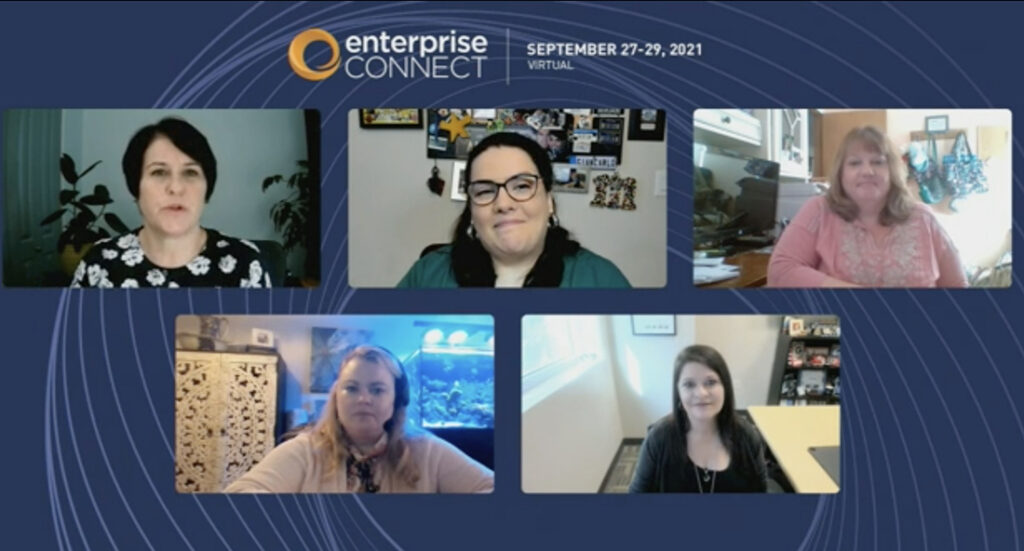
At a time with IT talent is at a premium, it’s risky to make assumptions about a woman’s preferred career path, according to a panel of IT leaders in an Enterprise Connect roundtable discussion on “Women in Communications.”
For example, Jo Cooey, executive director of Baldwin Risk Partners, cited a colleague who wanted to build her hard IT skills. “We placed her in a position that emphasized her soft skills, and gave her a warm welcome,” said Cooey. “We saw it as a promotion, but the new role was in a direction she didn’t want to go. It led to a good dialogue on our team about the importance of understanding the career paths of our colleagues, and being aware of any unconscious biases, even among female leaders.”
Beth Schultz, program co-chair, Enterprise Connect, agreed that women leaders are often pigeonholed into certain roles and asked the panelists for other examples.
“We often assume women are good at multitasking,” said Miriam Murad, unified communications solution architect, ExxonMobil. “As a result, we place them in supportive roles. I enjoy being a solution architect, and we are mentoring young technical employees – both men and women – who are interested in this career. I want to raise the bar and encourage other women to be architects as well.”
Christine Pilarczyk, voice architecture manager, Accenture, said women need to speak up for themselves. “You have to want that promotion and ask for it, so you don’t get overlooked,” she said.
Tina Potts, senior IT operations manager, Brooks Rehabilitation, also emphasized the importance of sending a clear message to leadership. “As the only female in engineering/operations, I can tell you that you have to be upfront and have those conversations with leadership,” she said. “Otherwise, you will just sit in the same chair. After all, you are doing a good job and the company appreciates your loyalty. So, speak up and tell them about your career goals.”
Leadership characteristics
Schultz then asked the panelists what characteristics are important for women leaders in IT.
Trust and transparency were front and center for Potts, who said, “Your team has to trust you and you have to trust your team. Be sure there is no hidden agenda.” That transparent process applies to career paths as well, she added. “Understand their next steps and provide clear feedback on what they need to do to achieve their goals. I spend a lot of time mentoring my team to help their professional growth.”
Pilarczyk said she takes time to listen to her team members and understand their individual agendas. “You also need to show your people that you care,” she said. “Wish them a happy birthday or congratulate them on an achievement.”
Murad agreed, adding “Your job is to create a connection with your team members, so listen to them and build that trust. The best leaders make you feel like family.”
As for motivating team members, Cooey said she challenges them to take on the assignments, and provide support so they can grow in their careers. Murad added she encourages her team to keep learning about new technology solutions, rather than simply doing the same thing day after day.
Finally, Schultz asked the panelists for their career advice. Pilarczyk and Potts focused on the importance of professional networking, which opens the door to new opportunities.
Cooey and Murad emphasized the importance of applying for new positions, even if the qualifications are challenging. “You might get a no the first time, but don’t take it personally,” said Murad. “But find out why, so you can improve and get that position the next time.”
